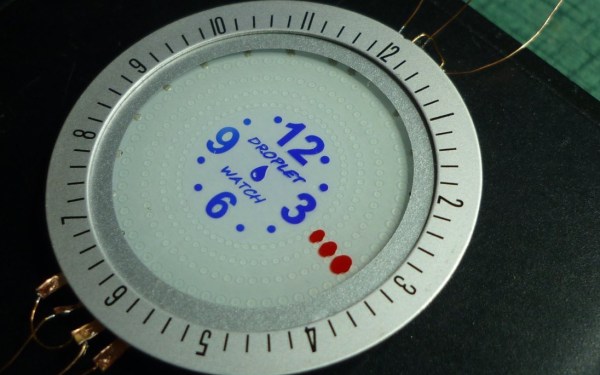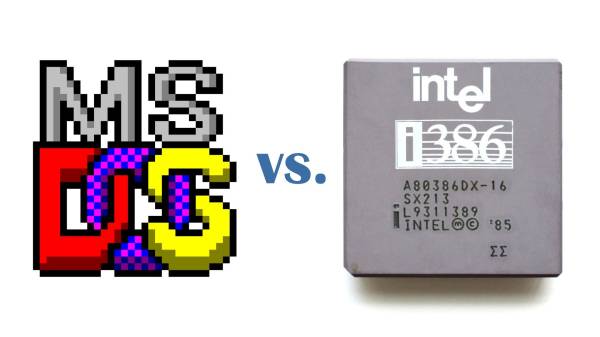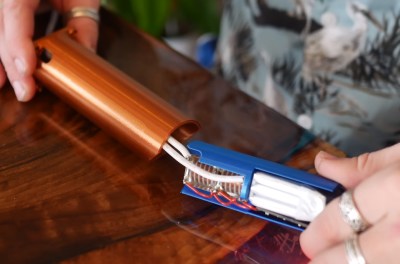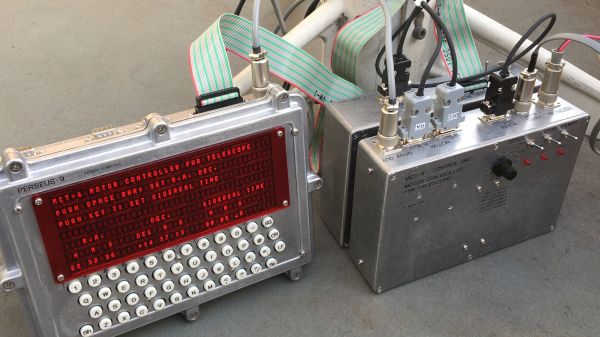Hackers just can’t help but turn their sights on timepieces, and [Armin Bindzus] has designed an electrowetting-based watch.
Electrowetting is a way of changing the contact angle of droplets on a surface using electricity, and can be used to move said droplets. The liquid needs to be polar, so in this case [Bindzus] has used a red ink mixed with mono-ethylene glycol to stand out against the white dielectric back of the device. The 60 individual electrodes of the bottom section were etched via laser out of the ITO-coated glass that makes up the bottom plates of the face.
The top plate houses the small round pillars that keep the ink constrained to its paths. They are made of a photosensitive epoxy that is spin-coated onto the glass and then cured via the laser. The plates are put together at a distance of 0.23 mm with epoxy, but a small hole is left to insert the droplets and a filler liquid. An Attiny1614 microcontroller runs the show along with a DS3231 RTC. A 46V signal drives the droplets around their path.
It seems this project is a bit away from true wearable use, but perhaps [Bindzus] could make a desk clock first? If you’re interested in another ink-based, watch, how about this custom E-Ink Tank watch?
Continue reading “Droplet Watch Keeps Time Via Electrowetting”



















